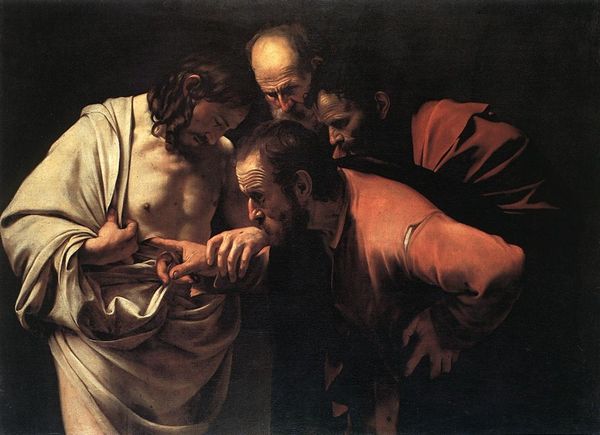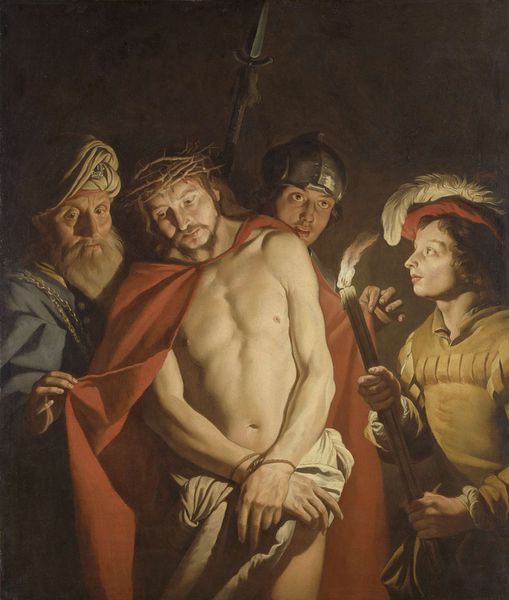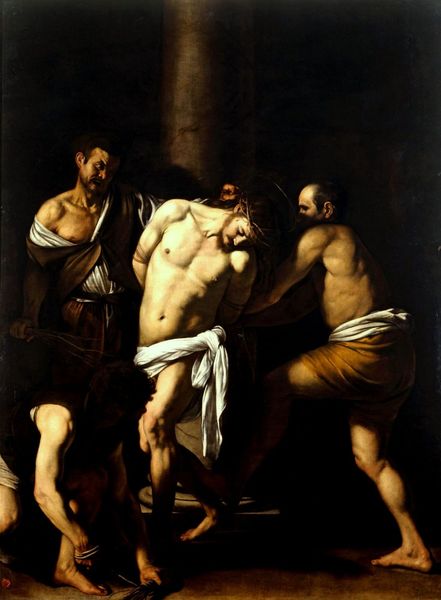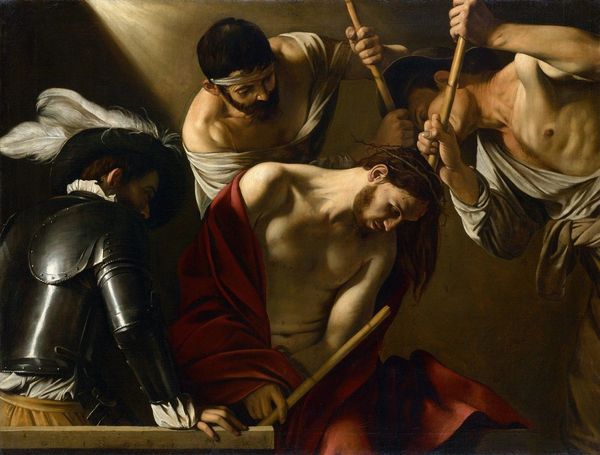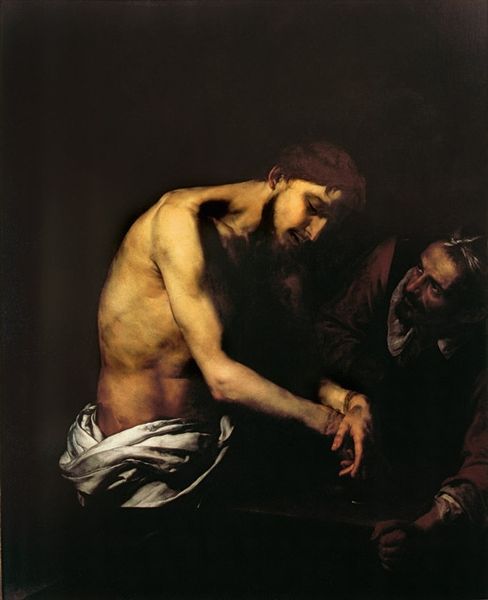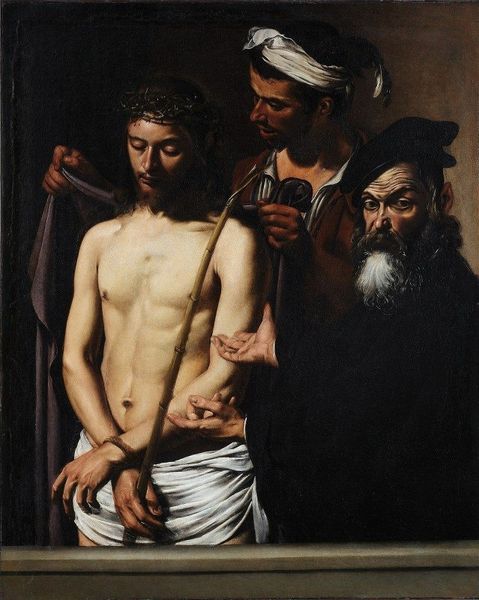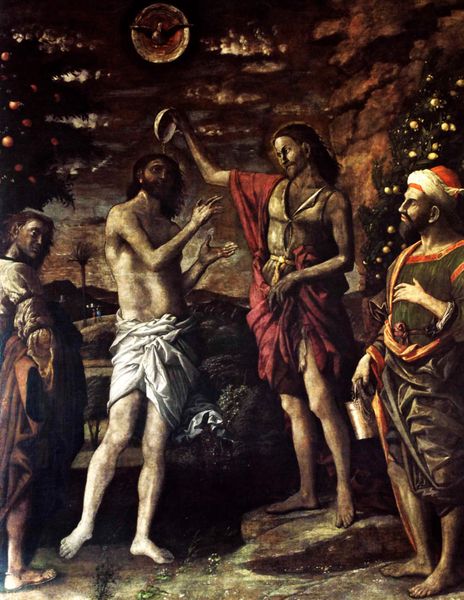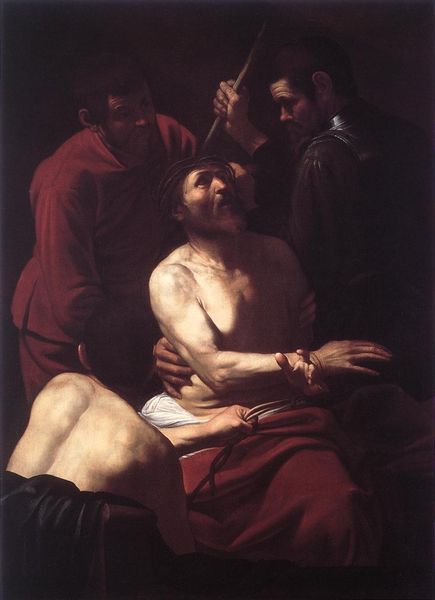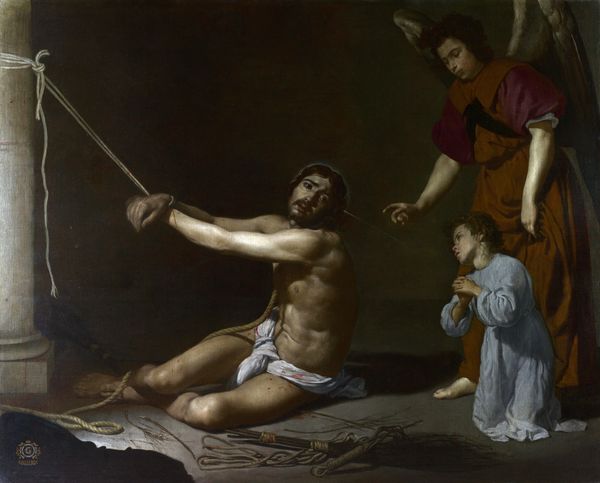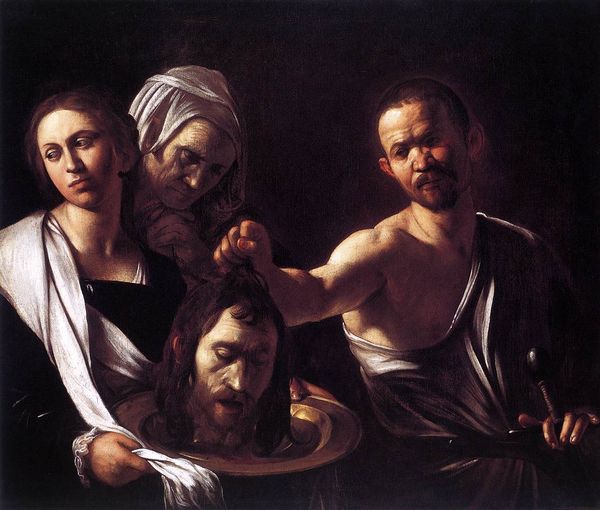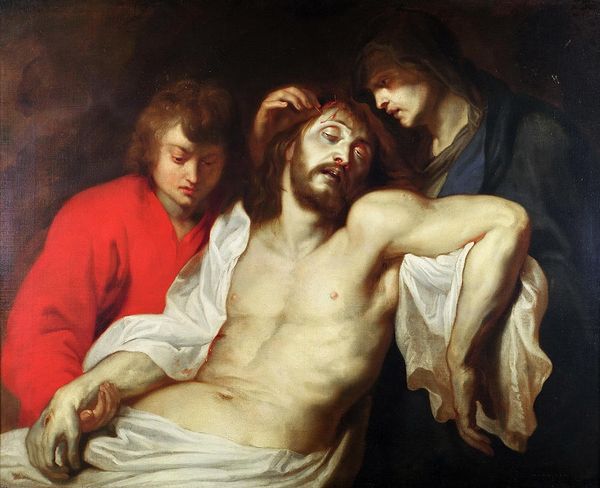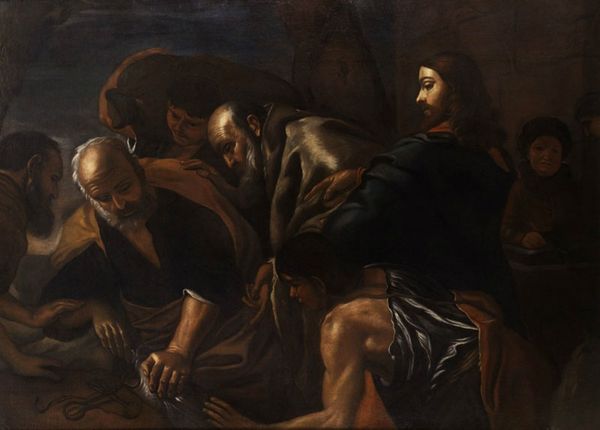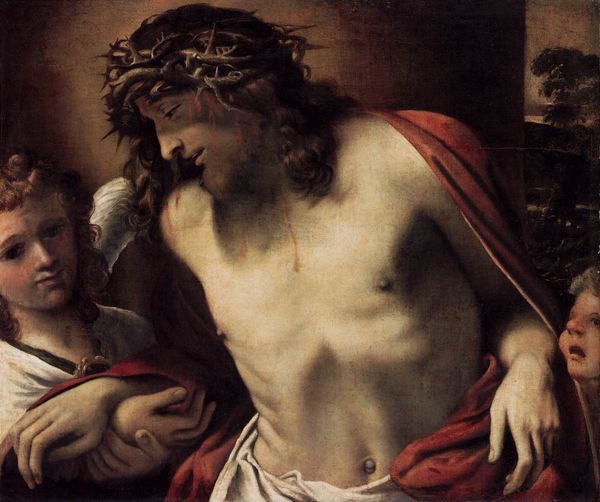
#
blurry
#
blurred
#
slightly blurry
#
neo expressionist
#
dark image
#
dark silhouette
#
blur shadow
#
blurriness
#
dramatic lighting and pose
#
blur
Copyright: Public Domain: Artvee
Caravaggio painted 'Christ at the Column' in Italy sometime around the turn of the 17th century, though the exact date remains a topic of scholarly debate. The brutal scene echoes the period's religious and social tensions, reflecting the Catholic Church's efforts to reassert its authority during the Counter-Reformation. Caravaggio's art challenges the period’s conventions. Rather than idealizing Christ, he presents him as a muscular, yet vulnerable man, subjected to physical abuse. This raw emotional realism spoke to the artist's patrons, who were often wealthy families or religious orders. It also reflected the growing divide between the Catholic elite and the common people, who sought a more relatable form of religious expression. Art historians consult a wide range of historical sources to provide context to Caravaggio's painting. These include Church records, artists' biographies, and accounts of daily life in Baroque Italy. Through such research, we can better understand the social, political, and religious forces that shaped Caravaggio’s art and its enduring appeal.
Comments
No comments
Be the first to comment and join the conversation on the ultimate creative platform.
